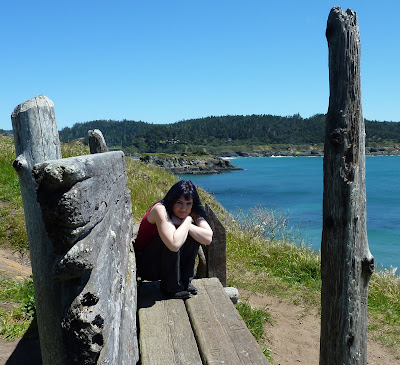
I am no fan of perfection. I don’t think there’s anything wrong with having standards, but when you define your standard as “perfection,” I think you run into trouble. One problem with “perfection” is that this concept is often presented as an attainable condition. It puts the idea into our little monkey brains that at some discernable point in the future, with a lot of effort, our lives will no longer be messy and confusing.

Take gravestones, for example. This week was the anniversary of the death of my grandfather. I marked the event with a walk through Westport Cemetery. My grandfather doesn’t have a gravestone. When he died, his ashes were scattered over a pond just south of the Hershey plant. So were his wife’s. So were his son’s. When I was younger, on the anniversary of his death, I would get profoundly sad because there was no gravestone to put flowers on. But as I walked through this cemetery, I changed my mind.

Cemeteries are the epitome of “perfection.” They are orderly. There are square family plots marked off from their neighbors, complete with cement curbs. Each family plot is divided into rectangles for graves. Each grave is marked with a standardized marker and contains a rectangular coffin. It’s a methodical grid of boxes within boxes, zones within zones - gated communities for the afterlife. Or cubicles of the damned. Either way.

Most of the plots at Westport are arranged around a married couple. Often, there is a monolith in the middle of the gravesite with a family name on it, flanked by two individual gravestones for the patriarch and matriarch, then perhaps some smaller markers for the progeny.

On many of the markers, time has worn away the names of individuals and has left behind only the familial role each had played in life: Husband. Wife. Son. Daughter.

Cemeteries are not for the dead; they are to comfort the living. Thus, I find this arrangement telling. People visiting here want to believe that Husband and Wife are there in the ground, resting together for eternity in a state of harmonious perfection.

As I was leaving the cemetery, a dapper raven landed nearby. It was because of him that I saw the hidden grave marker of two young "lovers" that I had overlooked before. Make of that what you will.

First, Master Raven was compelled to sing and dance for Alma, who had died in 1907 when she was 41.

Then, it was a melancholy little tune for the Jankowskis over by the fence.

When he was done with his ritual, he flew away, and I walked along the fence to go back to the car. That’s when I found this gravestone that I’d overlooked before.

When I saw the gravestone for the Native American remains, I wondered at the logic behind interring Native American bones side-by-side with the bones of the very people who displaced the Native Americans in the first place. I was particularly struck by the inscription on the gravestone. It reads, NATIVE AMERICAN REMAINS (MALE & FEMALE) Reburied on Jan. 31, 2004. By emphasizing that the remains are male and female, I couldn’t help but think that this was meant to mirror the picture-perfect Husband - Wife arrangement of the rest of the cemetery. Never mind that these two Native American individuals probably didn’t even know each other - the living felt that they deserved to rest here in harmonious perfection right alongside the everlasting remains of Husband and Wife.

Humans are imperfect. We lie and are often cowards. We cheat and hurt the ones we love. All the time. And we fail. Constantly. My grandfather was about as far from perfect as you can get. He was a hard drinker. He smoked a lot of cigarettes, too, and sometimes he wasn’t very nice to horses. He wasn’t a good father to his children even though he adored them, and I have reason to believe that he wasn’t always faithful to his wife even though he clearly loved her with devotion. Yet I loved this far-from-perfect human as much as it’s possible for one human being to love another. Because if you refuse to love any human who is imperfect, then you will never love. And if you expect love itself to be perfect, then you’re in for a huge disappointment. Love is a painful, chaotic, complicated thing. It is merciless. It comes in an infinite variety of shapes and sizes, and it’s rarely predictable. It is fond of ambush, and there is no earthly way that Husband and Wife got out of it unscathed, regardless of how romantic their entombment might appear to those of us who remain behind.

I used to take comfort in the thought that when I died, my ashes could be scattered over the pond where my grandfather’s ashes were scattered. Today the pond has been cemented over, and an industrial complex has been built up in its place. You know, the sort of establishment where you can rent forklifts and storage units. Fortunately, in my maturity, I have come to realize that there might be better places on earth to scatter my meager remains than in the shadow of the old Hershey plant. And now, I’m very glad there isn’t a gravestone out there that implies that my grandfather was something other than what he was. I think the gravestone of Husband and Wife should read like this:
Here rests Husband and Wife.
She was a notorious flirt.
He had a gambling problem.
But they loved and were loved anyway.












































